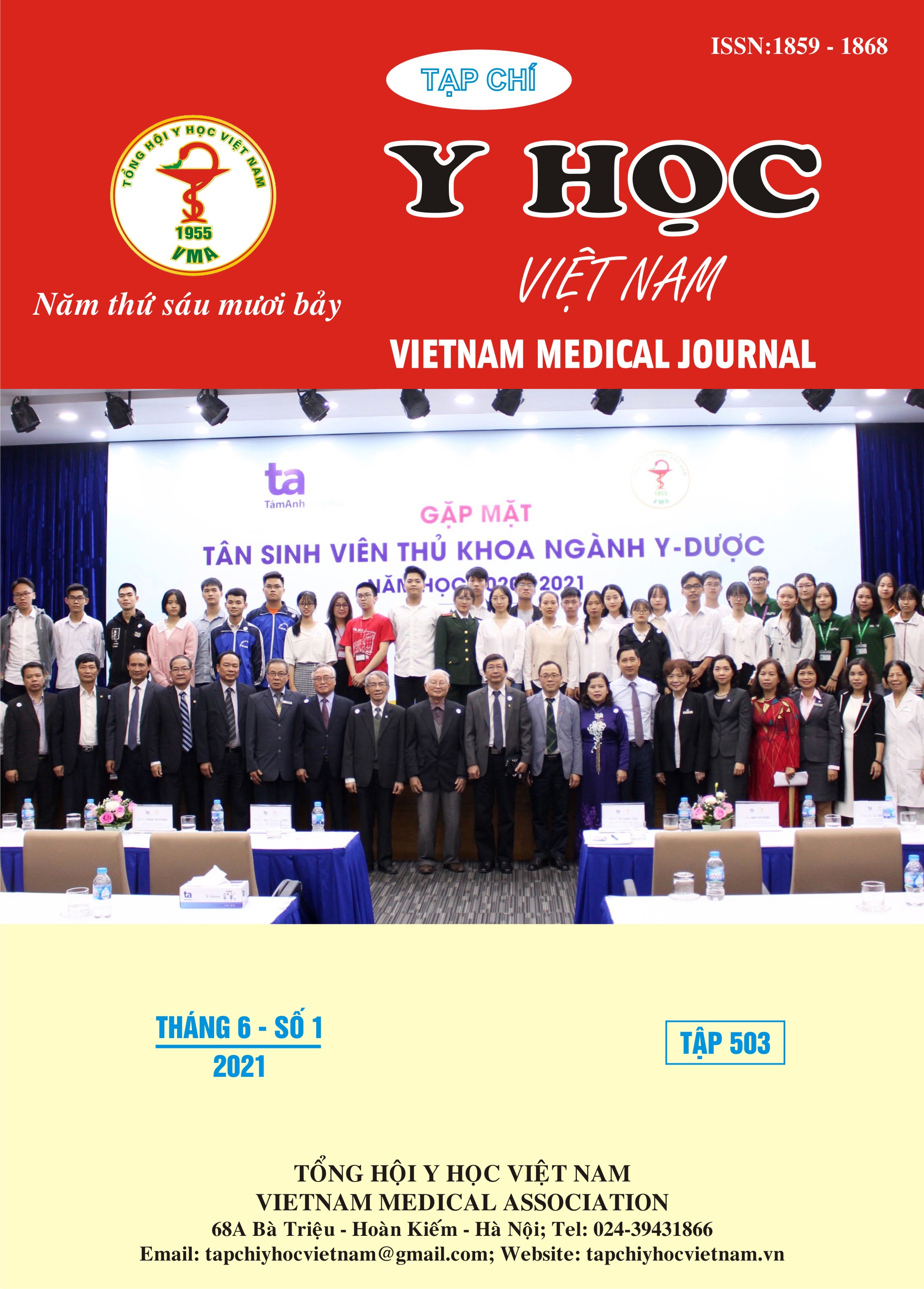DEEP BRAIN STIMULATION IN PARKINSON IDIOPATHY DISEASE: CLINICAL AND IMAGE CHARACTERISTICS, CLINICAL OUTCOMES AT VIETDUC HOSPITAL
Main Article Content
Abstract
Objective: to study the clinical characteristics, diagnostic imaging, clinical outcomes of PD, using DBS. Subjects and Methods: prospective, cross-sectional described 10 cases of PD opereted in the department of neurosurgery, Vietduc hospital from 1/2016 to 5/2020. Results and Conclusions: a men account for the majority (70%), the average age of surgery is 60 years old, typical clinical symptoms are movement disorders, electrophysiological exploration intra operation to identify STN sharps, improved results mobilization through UPDRS scale, evaluated after 3 months - 6 months - 12 months, all showed good and stable improvement of movement disorders, reduced 25 - 50% of levodopa dose, no special complications post op.
Article Details
Keywords
Deep brain stimulation, subthalamus nucleus, microelectrode, Magnetic resonance imaging, Parkinson idiopathy
References
2. Okun MS, Foote KD. Parkinson’s disease DBS: what, when, who and why? The time has come to tailor DBS targets. Expert Rev Neurother. 1 Tháng Chạp 2010;10(12):1847–57.
3. Kelly E. Lyons, Rajesh Pahwa. Deep Brain Stimulation. Handbook of Parkinson’s disease. USA; 2007. tr 409–19.
4. Joseph Jankovic. Pathophysiology and Clinical Assessment.Handbook of Parkinson’s disease. USA; 2007. tr 49–63.
5. Ciecierski K, Raś ZW, Przybyszewski AW. Selection of the Optimal Microelectrode during DBS Surgery in Parkinson’s Patients. Foundations of Intelligent Systems. Springer Berlin Heidelberg; 2011. tr 554–64. (Lecture Notes in Computer Science).
6. Schüpbach WMM, Chastan N, Welter ML, Houeto JL, Mesnage V, Bonnet AM, và c.s. Stimulation of the subthalamic nucleus in Parkinson’s disease: a 5 year follow up. J Neurol Neurosurg Psychiatry. 2005;76(12):1640–4.


